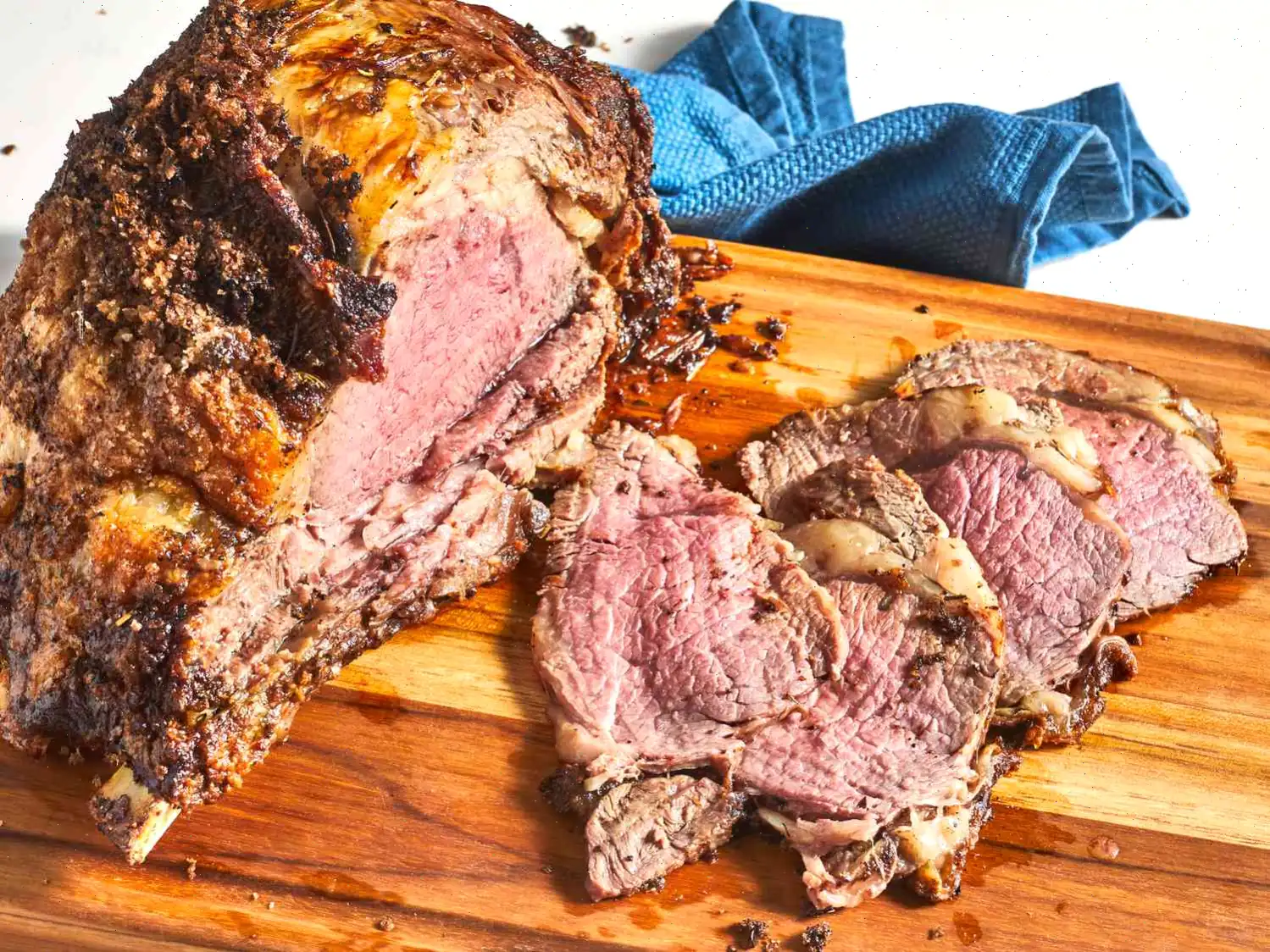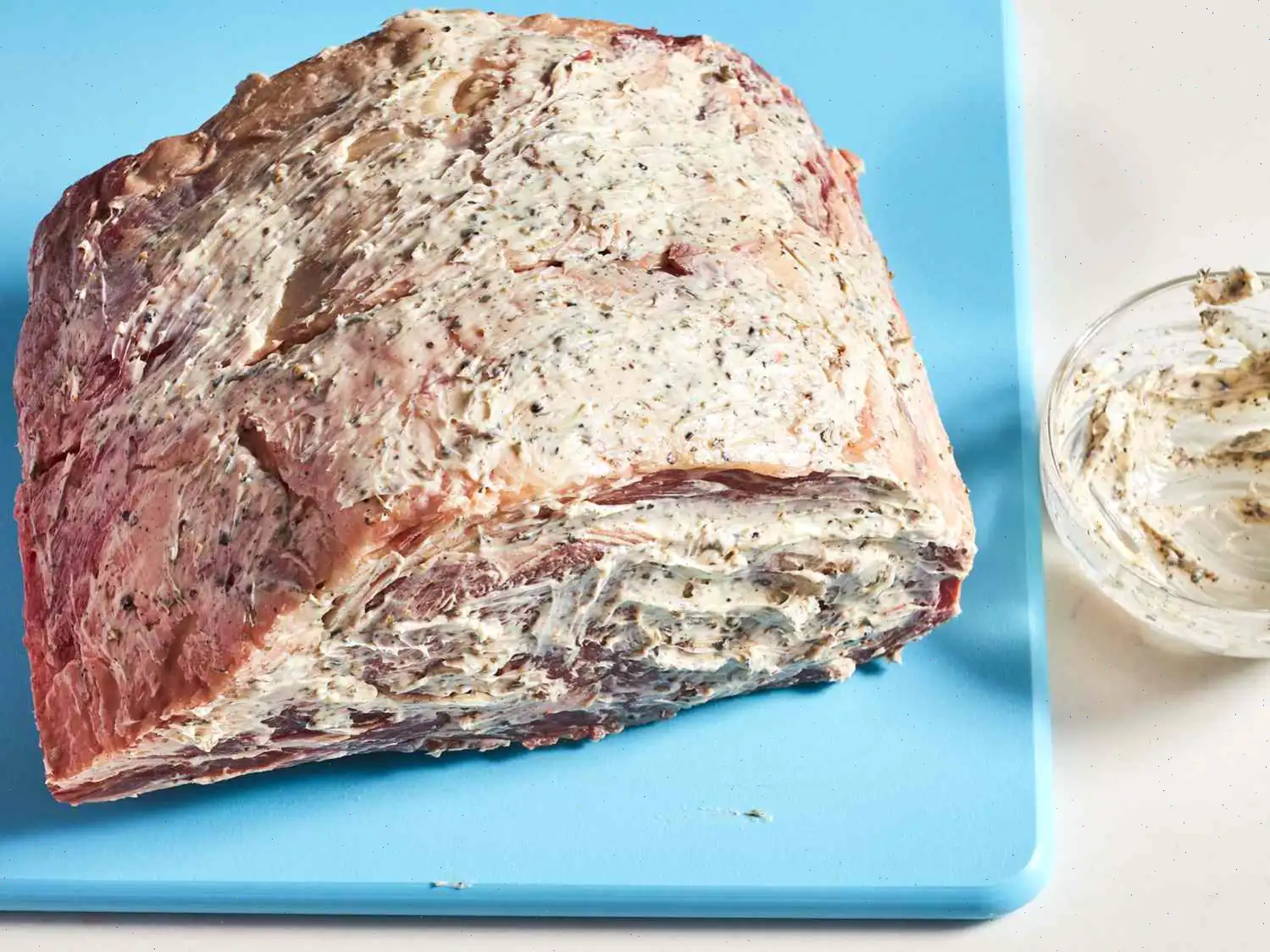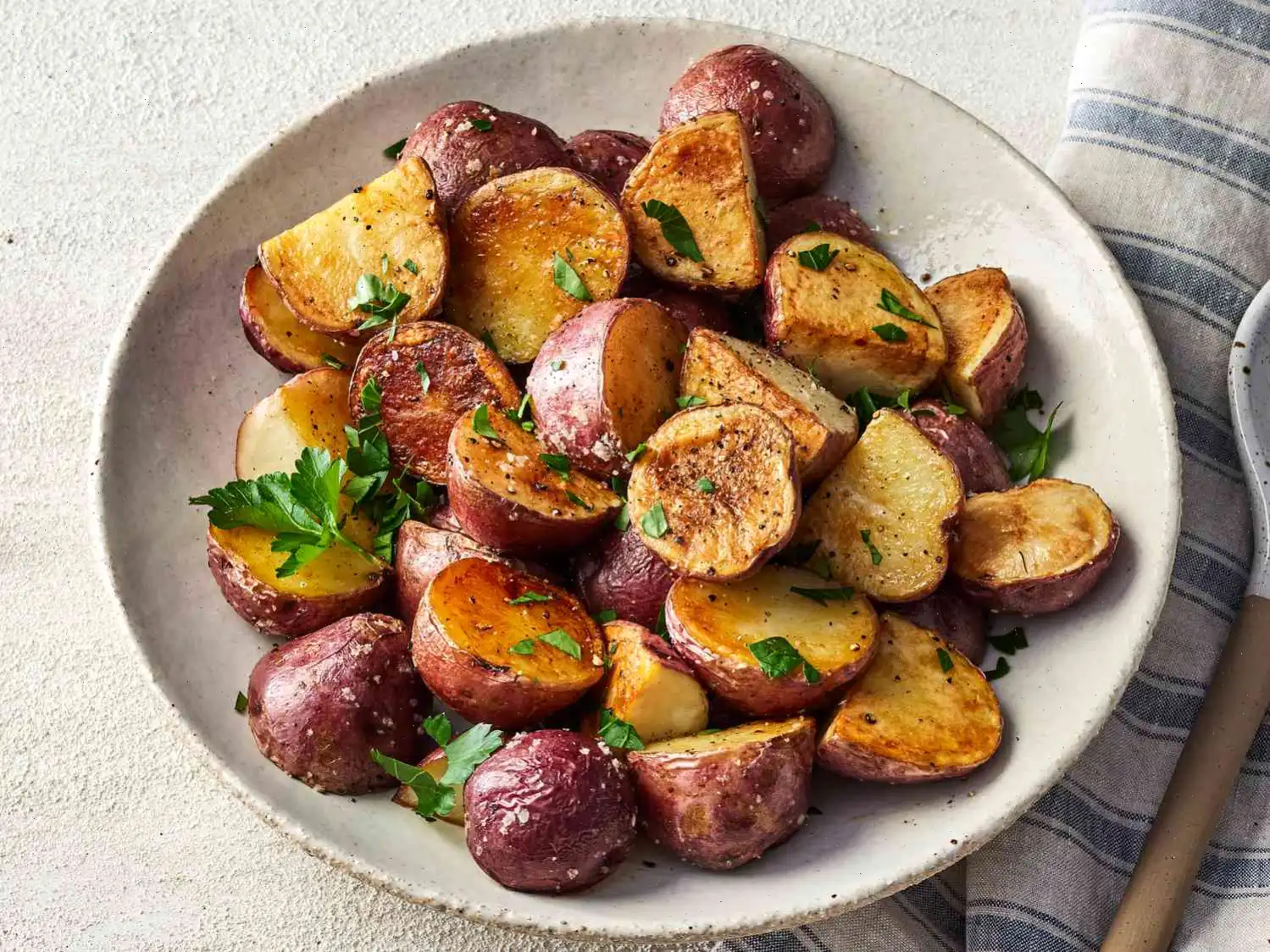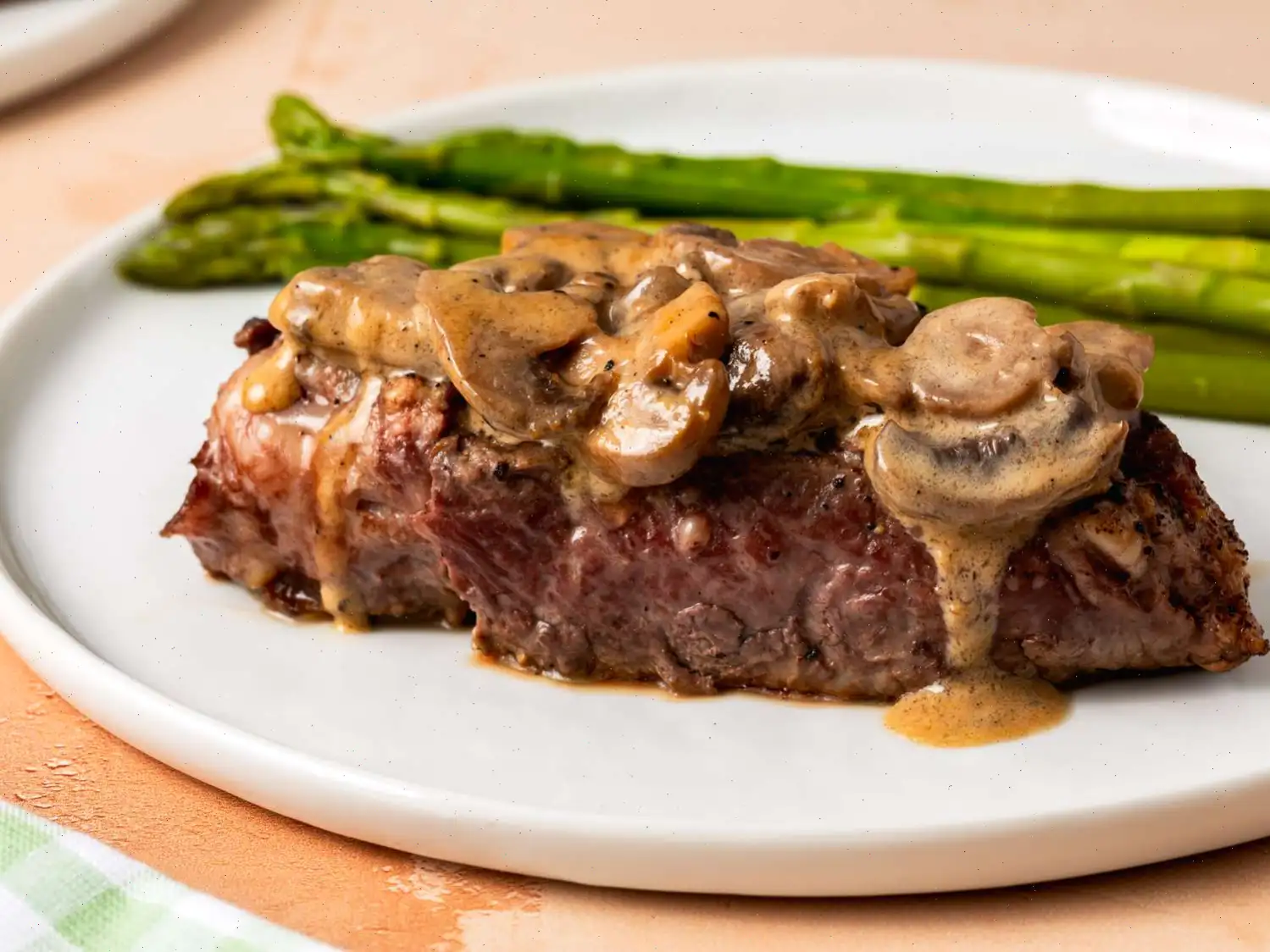
Chef John's Perfect Prime Rib Recipe
If you've ever carved into a prime rib at a big holiday meal expecting a juicy, perfectly pink interior only to discover a dry, overcooked roast, this recipe is for you. Follow these foolproof steps to make the best prime rib you've ever tasted. Chef John's simple method will ensure your prime rib is perfectly cooked every time.
Ingredients:
- 1 (4-pound) bone-in prime rib roast (room temperature)
- cup unsalted butter, softened
- 1 tablespoon freshly ground black pepper
- 1 teaspoon herbes de Provence
- Kosher salt to taste
Directions:
Step 1: Start by bringing your prime rib to room temperature. Place it on a plate and let it sit for 2 to 4 hours before cooking.
Step 2: Preheat your oven to 500F (260C). Make sure it is fully preheated before moving to the next step.
Step 3: In a bowl, combine the softened butter, black pepper, and herbes de Provence. Mix the ingredients until well-blended.
Step 4: Spread the butter mixture evenly over the entire surface of the prime rib. Be generous with kosher salt to season the roast to your liking.
Step 5: Place the seasoned roast in the preheated oven. If your roast weighs exactly 4 pounds, roast it for 20 minutes. If your prime rib is heavier or lighter, multiply the exact weight by 5 minutes to determine the roasting time.
Step 6: After the roasting time has elapsed, turn off the oven and leave the prime rib inside. Do not open the oven door! Let it sit for 2 hours. During this time, the roast will continue to cook gently from the residual heat.
Step 7: After 2 hours, remove the roast from the oven. Slice it up and serve the most perfectly medium-rare prime rib you've ever seen!
Chef's Tips:
This method works best with a modern oven that has a digital temperature setting, as older ovens with manual controls can vary in temperature. Also, it's crucial that the prime rib is at room temperature when you start for the math to work properly.
If you want to be extra cautious, you can insert a probe-style thermometer to monitor the internal temperature of the roast. For medium-rare, aim for 125F (52C) internally, and be sure to pull the roast out of the oven when the thermometer alarm goes off, even if there's still time left on the oven timer.
Nutrition Facts (per serving):
- Calories: 1757
- Total Fat: 161g (206% Daily Value)
- Saturated Fat: 70g (348% Daily Value)
- Cholesterol: 362mg (121% Daily Value)
- Sodium: 343mg (15% Daily Value)
- Total Carbohydrate: 1g (0% Daily Value)
- Dietary Fiber: 0g (1% Daily Value)
- Protein: 73g (145% Daily Value)
- Iron: 8mg (44% Daily Value)
- Potassium: 1189mg (25% Daily Value)
* Percent Daily Values are based on a 2,000 calorie diet. Your daily values may be higher or lower depending on your calorie needs.
Note: Make sure you dont open the oven door until the 2-hour waiting time is up, as this is key to achieving the perfect prime rib. And always remember to bring the roast to room temperature before starting!
Serving Suggestions:
Serve your prime rib with Chef John's Beef Au Jus or Prime Rib Gravy and Homemade Horseradish Sauce for an unforgettable meal.
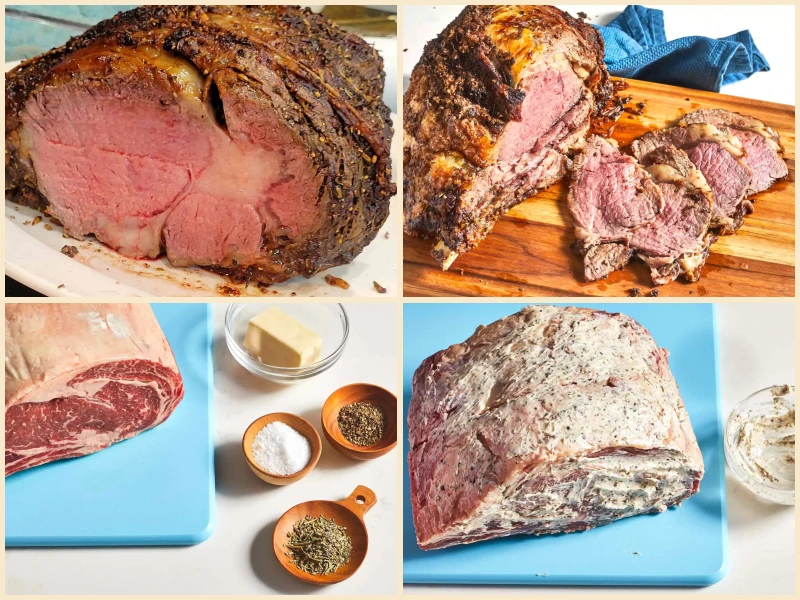
Prime rib, a dish that has graced tables for centuries, is often considered the pinnacle of festive meals and fine dining. The rich, tender beef paired with a golden-brown crust is not only a showstopper, but also a testament to the skill and artistry involved in cooking. Chef Johns recipe for the "Perfect Prime Rib" is a foolproof method that guarantees a juicy, medium-rare roast every time. But how did this impressive cut of beef come to be? Let's explore its origins, regional variations, and some fascinating facts about this luxurious dish.
History of Prime Rib
The term "prime rib" refers to a cut from the rib section of the beef carcass. This cut became popular in the 19th century, with the "prime" designation denoting the highest quality of beef available. Prime rib has long been a centerpiece at upscale dinner parties, especially in the United States and Europe. Historically, it was reserved for special occasions due to its price and the expertise required to cook it to perfection.
Regional Variations
While prime rib is widely enjoyed, its preparation and presentation vary depending on region. In the United States, it is often roasted at high temperatures to create a crispy exterior while maintaining a tender, pink interior. In contrast, British versions may feature additional flavorings such as rosemary or mustard and can be roasted for a longer period to achieve a more well-done roast. In France, prime rib is sometimes prepared as "cte de boeuf" and is commonly served with rich sauces such as barnaise or au jus.
What Sets Prime Rib Apart
Prime rib stands out from similar cuts of beef, such as ribeye steaks or sirloin roasts, due to its tenderness and the even distribution of marbled fat. The entire rib roast is typically cooked with the bone in, which enhances flavor and moisture retention during cooking. The key distinction of prime rib lies in the technique used: Chef Johns method emphasizes cooking the meat at high heat initially, followed by a lengthy resting period in the oven (with the heat turned off), which results in a perfectly cooked roast every time.
Where Prime Rib is Typically Served
Prime rib is often the centerpiece at holiday dinners and special events like Christmas, New Year's Eve, or Thanksgiving. It is commonly served at upscale steakhouses and fine dining restaurants. In home kitchens, prime rib is often paired with classic sides such as mashed potatoes, roasted vegetables, Yorkshire pudding, and au jus sauce. Its rich, flavorful nature makes it a go-to choice for celebrations and large gatherings, where the dish can shine in all its glory.
Interesting Facts About Prime Rib
- The bone-in nature of prime rib not only contributes to its flavor but also helps retain moisture during the cooking process, ensuring a juicy roast.
- Prime rib is often considered a "dry heat" cooking method, meaning the roast is placed directly in the oven without any added liquids, allowing it to develop a beautiful crust.
- In the United States, prime rib is typically aged for several weeks to improve tenderness and flavor. Aged prime rib is a luxurious version of the dish that is particularly prized in fine dining.
- Chef Johns "mathematical method" for cooking prime rib roasting at 500F for a specific time based on the weight of the roast, followed by a two-hour resting period has garnered praise for its simplicity and reliability, helping home cooks achieve restaurant-quality results.
Whether you're a novice cook or a seasoned chef, Chef John's Perfect Prime Rib recipe is a surefire way to impress your guests and enjoy a tender, flavorful roast. By understanding the history, regional differences, and techniques behind this dish, you can elevate your culinary skills and add a touch of sophistication to any meal.
FAQ about Chef John's Perfect Prime Rib Recipe
Comments
Samuel Gonzalez
08/25/2024 08:53:27 AM
Cooking this dish at 450 degrees for 1 hour results in a perfectly sized slice that pairs wonderfully with syrup and molasses. Let it sit in the oven for 40 minutes and you'll be amazed by the delicious onion sauce. Wow, what a great combination!
Donald Gomez
09/20/2023 04:33:06 AM
I have repeatedly followed this recipe without any disappointments. My only modification is skipping the "flavored butter" step and instead spreading butter all over the roast, then seasoning with salt, pepper, garlic, and herbs. It's essential for the roast to be at room temperature to prevent the butter from burning. The result is still delicious, but not reaching its full potential.
Frank Anderson
02/11/2025 08:07:12 AM
This recipe has been my favorite for cooking prime rib for many years. I have used it with various old ovens, and it has never let me down. As someone who used to be intimidated by roasting meat, this recipe has boosted my confidence and allowed me to amaze my family, friends, and customers with culinary abilities I learned from the internet. Thank you!



